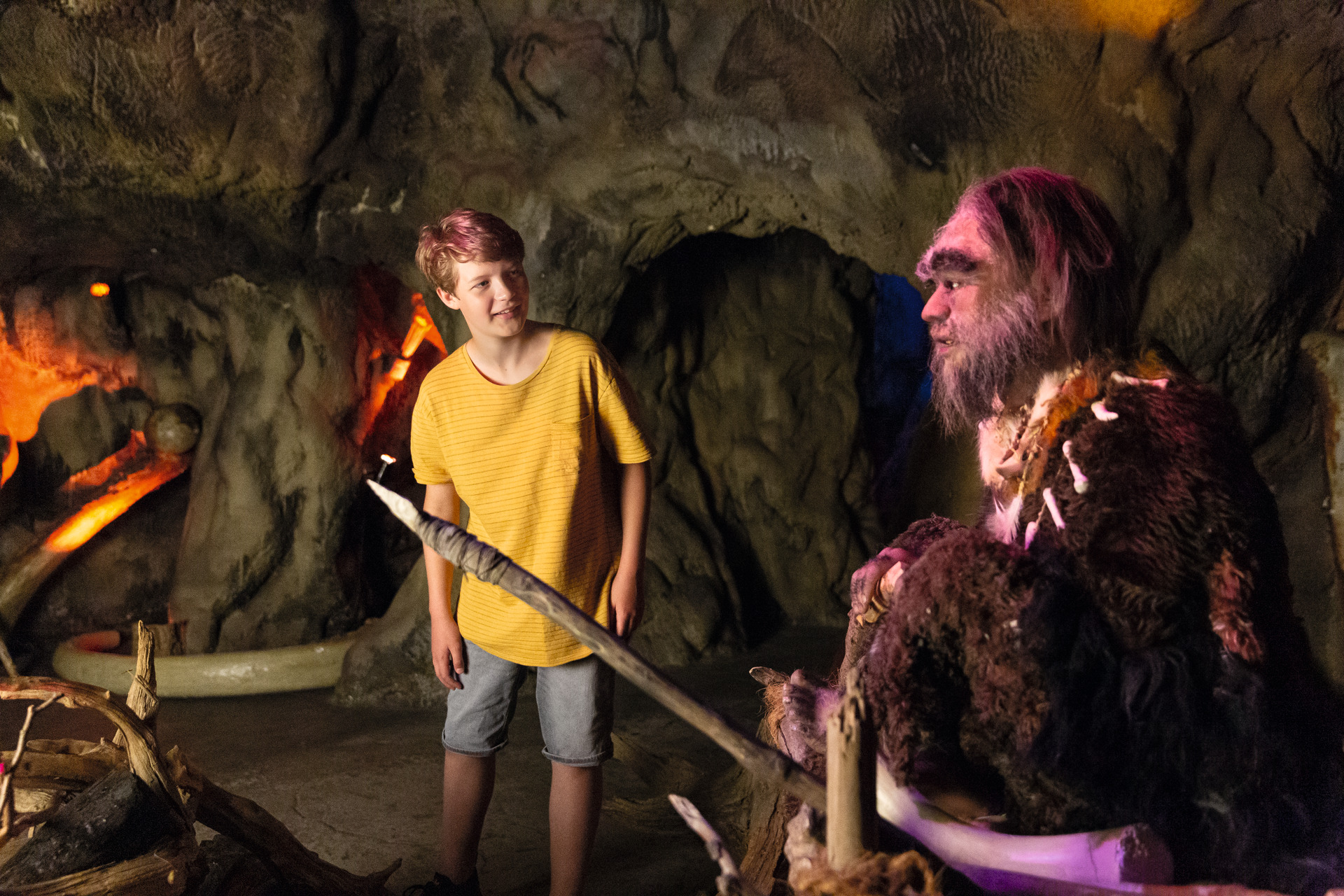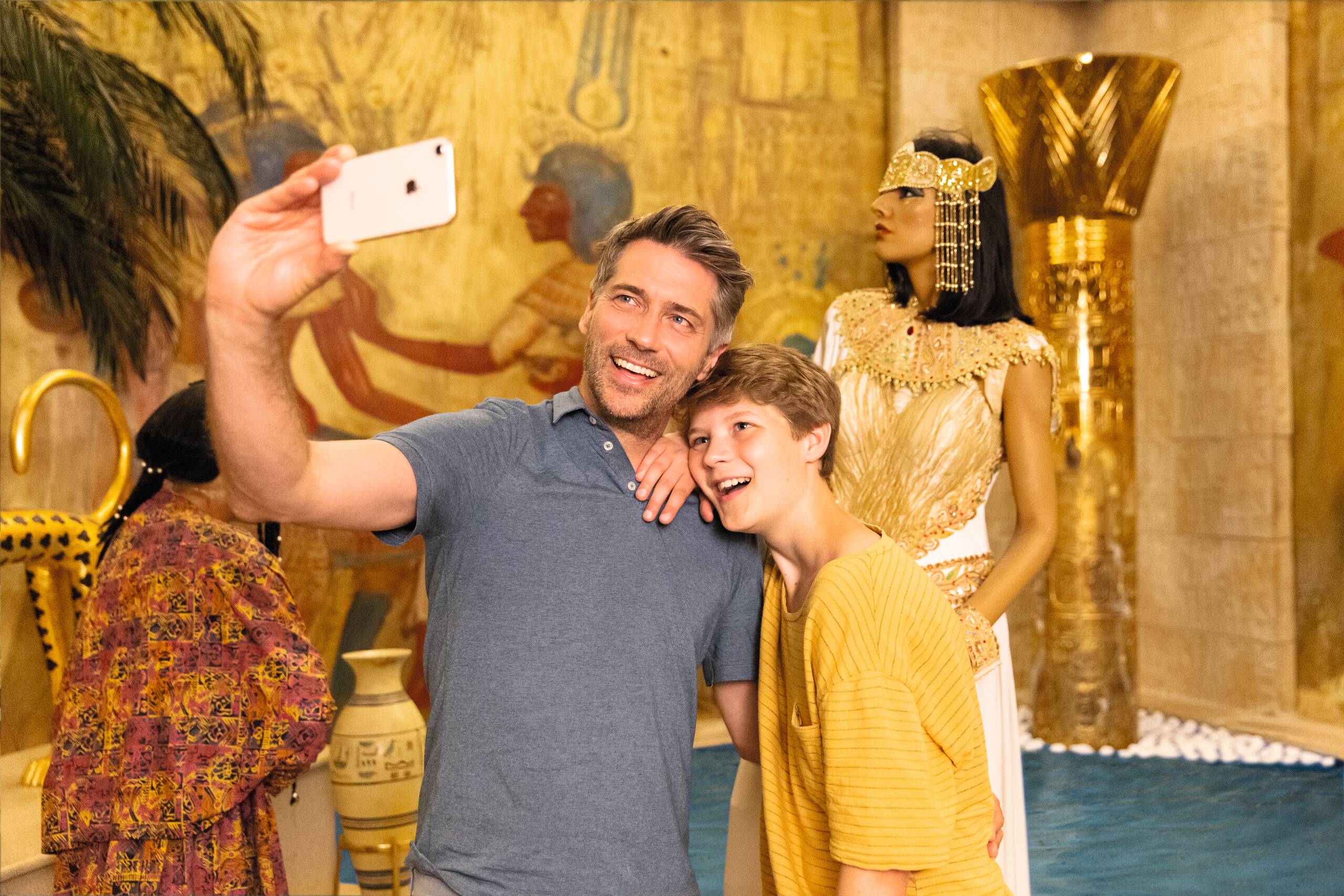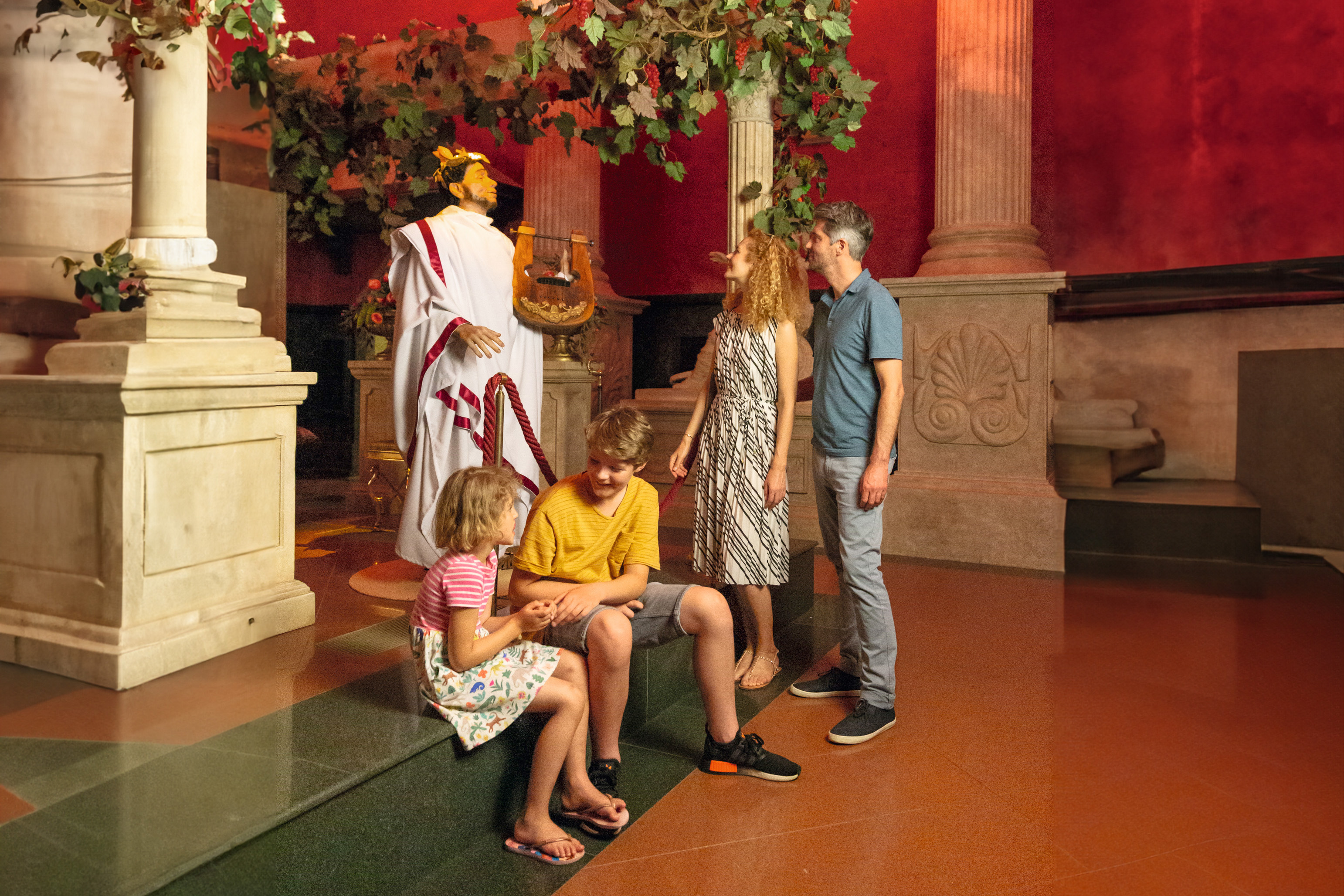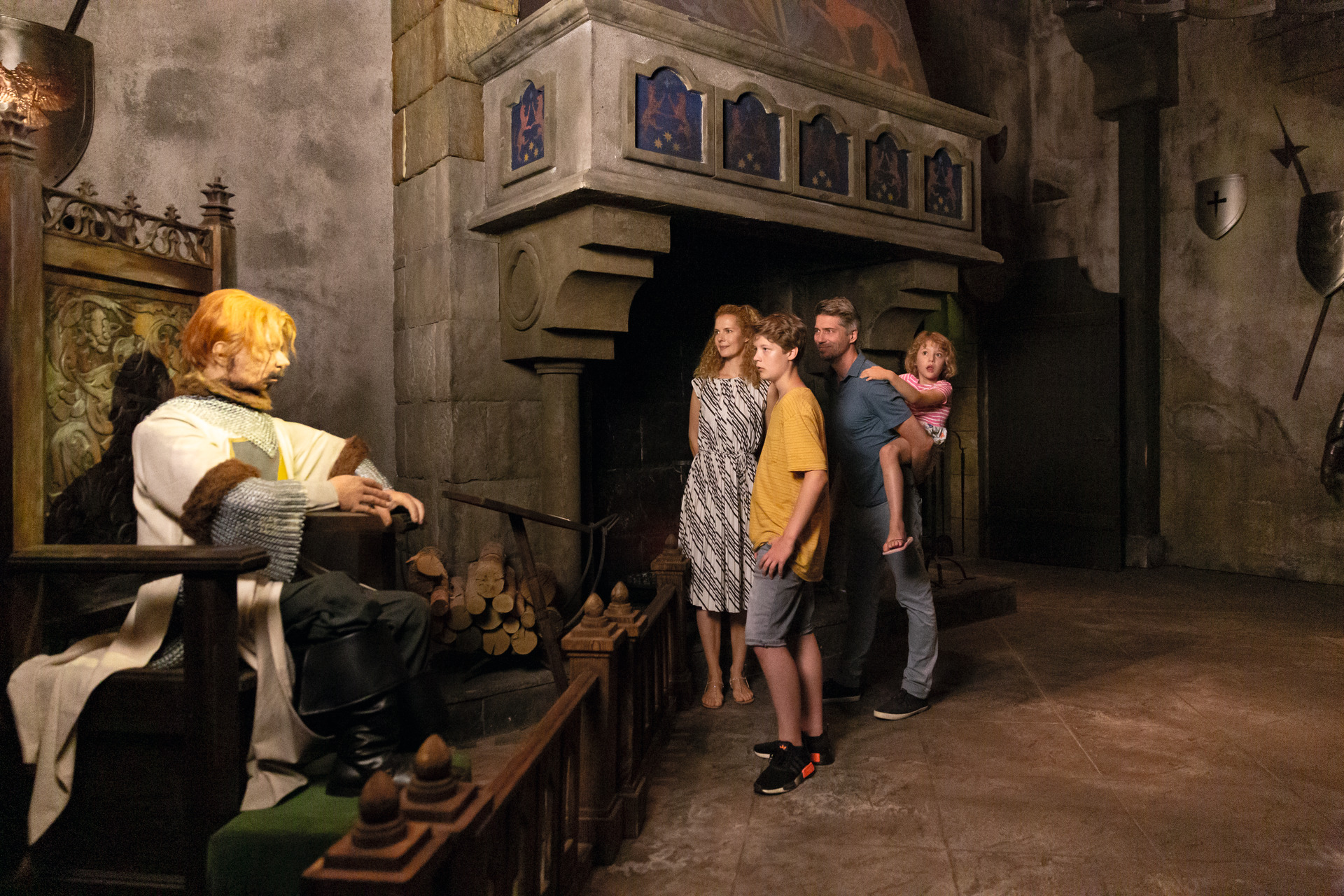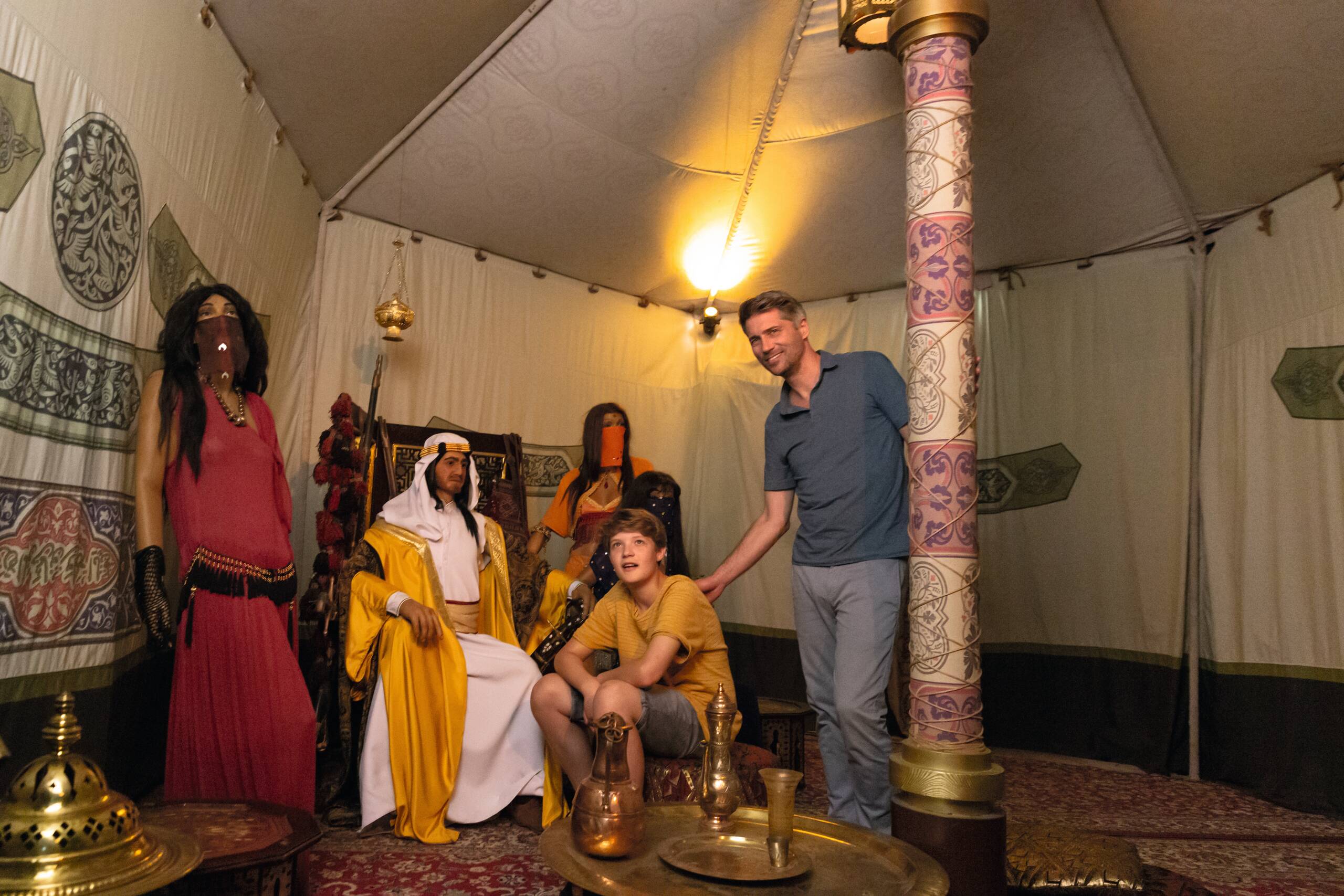In the universe of time
The history of human development
The Universe of Time was created in the year 2000 and covers an area of 2,500 square metres; it is based strictly on original documents and was planned in collaboration with a team of historians and archaeologists. Your journey through the past, present and future of living takes you through unique, true-to-life settings.
The climate changes depending on the era or region - it might be warm or even hot like in the tropics, or it can be cool and damp. Typical odours create an all-round authentic experience - sure to be unforgettable for visitors of all ages. Time to set off on an exciting journey through time from Ancient Egypt and into the future.

